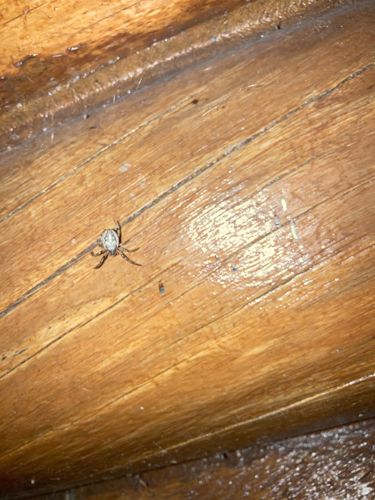Orb-weaver spider (possibly a garden orb-weaver or similar species)
Scientific Name: Araneidae (family)
Order & Family: Order: Araneae, Family: Araneidae
Size: Body length typically ranges from 5 mm to 20 mm, with females often significantly larger than males. Leg span can be much larger.

Natural Habitat
Orb-weavers are prolific web-spinners and are found in a wide variety of habitats, including gardens, fields, forests, and around human dwellings. They prefer areas with vegetation or structures where they can anchor their webs.
Diet & Feeding
Orb-weavers are predatory spiders that primarily feed on insects (flies, moths, mosquitoes, beetles, etc.) caught in their sticky silk webs. They inject venom to paralyze their prey and then liquefy its internal tissues before sucking them dry.
Behavior Patterns
Orb-weavers are known for constructing intricate, spiral, wheel-shaped webs. Most species are nocturnal, building or repairing their webs at dusk and dismantling them at dawn, though some may leave them up during the day. They typically sit in the center of their web or hide nearby, often with a signal line to detect vibrations from captured prey.
Risks & Benefits
Risks: Orb-weaver spiders are generally harmless to humans. Their venom is not considered medically significant to people, and bites are rare, usually only occurring if the spider feels threatened or is accidentally pressed against the skin. A bite might cause mild pain, swelling, or redness, similar to a bee sting. Benefits: They are highly beneficial predators in ecosystems, helping to control populations of various insect pests. Their presence can indicate a healthy insect population in an area.
Identified on: 9/29/2025